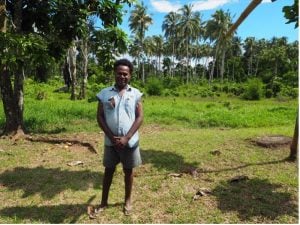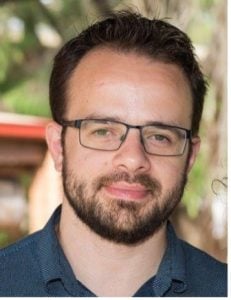What can we learn from Healthy Islands?

Francis Lusem, a member of the Healthy Sianios and Samo Villages project in Lihir Island, Papua New Guinea. Francis helped his community transform the land behind him from a swamp to a healthier setting.
In the Pacific, the concept of Healthy Islands is enshrined in the Yanuca Island Declaration (1995) that describes Healthy Islands as places where:
- children are nurtured in body and mind
- environments invite learning and leisure
- people work with age and dignity
- ecological balance is a source of pride
- the ocean which sustains us is protected
This vision has inspired an array of health promotion programs, ranging from promoting women’s participation in sport in Tonga, to reducing sugar sweetened beverages in Tokelau, to improving sanitation in villages in Papua New Guinea.
In collaboration with colleagues at the WHO Western Pacific Regional Office, Colin Bell and I spoke to coordinators of these initiatives, and several others, to find out what works best, and how other communities can emulate their success. Their responses emphasised a local community focus, collaboration; sound planning and implementation; and using evidence, evaluation and research.
Having a local community focus was by far the most commonly identified and discussed success factor. Locally driven initiatives, created by local people, to suit local needs. This is well summed up in the following quote from one of the participants:
‘I would advise [implementers of health promotion projects] to listen to the ‘voice’ of the people, the people we are serving, while at the same time, empower them with the knowledge and understanding that they need to make good decisions. When they own their decisions, they will willingly implement, monitor and sustain their decisions.’
This is not to say there is no role for outside expertise though. Indeed, we found that global targets, issues, tools and approaches were often adapted (but not forced) to the local situation, and communities found creative ways of doing this. PEN Fa’a Samoa and the Island Food Community of Pohnpei are two classic examples of this in action.
There is a lot we can learn from Health Islands. Australian cities, communities, lands and oceans are similarly impacted by health and environmental threats to the ideals of Healthy Islands vision (and the ideals likely resonate for many Australians on this large island). COVID-19 is one example of a threat to these ideals through isolation from our communities and support networks. Hence, as current and future health professionals, it is worth reflecting on the question: how are we representing, responding to, and empowering our local communities? A common saying is ‘think globally, act locally’. I’d argue we need to ‘think and act globally’, and ‘think and act locally’, even if it doesn’t quite have the same ring to it!
Check out our Health Promotion International article entitled Pacific Healthy Islands Vision: success factors and challenges faced by health promotion programs if you’d like to know more about this work.

Dr Erik Martin’s research is focused on how to best reduce burden of non-communicable diseases through community and policy action, and improve health equity for diverse populations